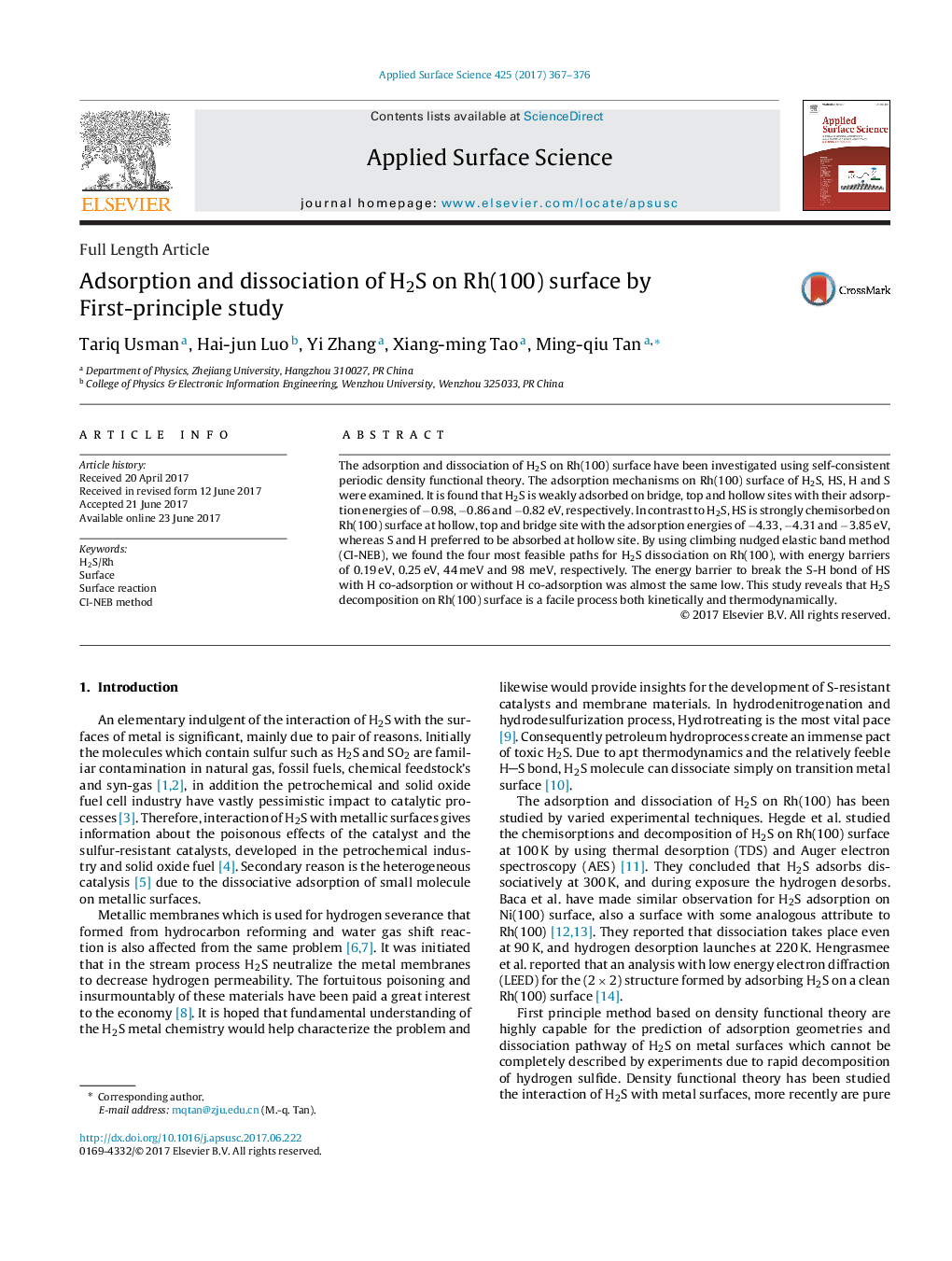| Article ID | Journal | Published Year | Pages | File Type |
|---|---|---|---|---|
| 5347354 | Applied Surface Science | 2017 | 10 Pages |
Abstract
The adsorption and dissociation of H2S on Rh(100) surface have been investigated using self-consistent periodic density functional theory. The adsorption mechanisms on Rh(100) surface of H2S, HS, H and S were examined. It is found that H2S is weakly adsorbed on bridge, top and hollow sites with their adsorption energies of â0.98, â0.86 and â0.82Â eV, respectively. In contrast to H2S, HS is strongly chemisorbed on Rh(100) surface at hollow, top and bridge site with the adsorption energies of â4.33, â4.31 and â3.85Â eV, whereas S and H preferred to be absorbed at hollow site. By using climbing nudged elastic band method (CI-NEB), we found the four most feasible paths for H2S dissociation on Rh(100), with energy barriers of 0.19Â eV, 0.25Â eV, 44Â meV and 98 meV, respectively. The energy barrier to break the S-H bond of HS with H co-adsorption or without H co-adsorption was almost the same low. This study reveals that H2S decomposition on Rh(100) surface is a facile process both kinetically and thermodynamically.
Keywords
Related Topics
Physical Sciences and Engineering
Chemistry
Physical and Theoretical Chemistry
Authors
Tariq Usman, Hai-jun Luo, Yi Zhang, Xiang-ming Tao, Ming-qiu Tan,
